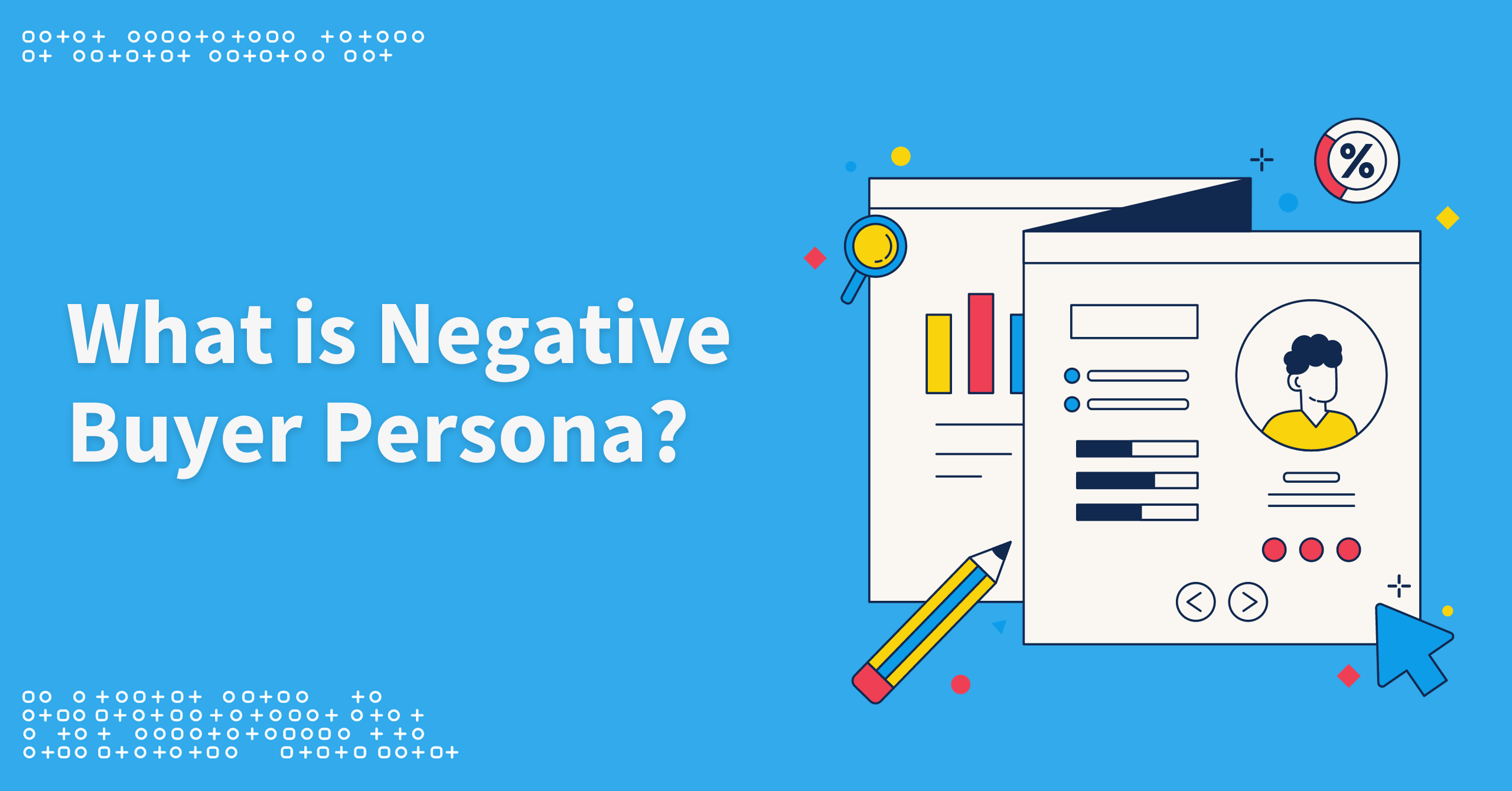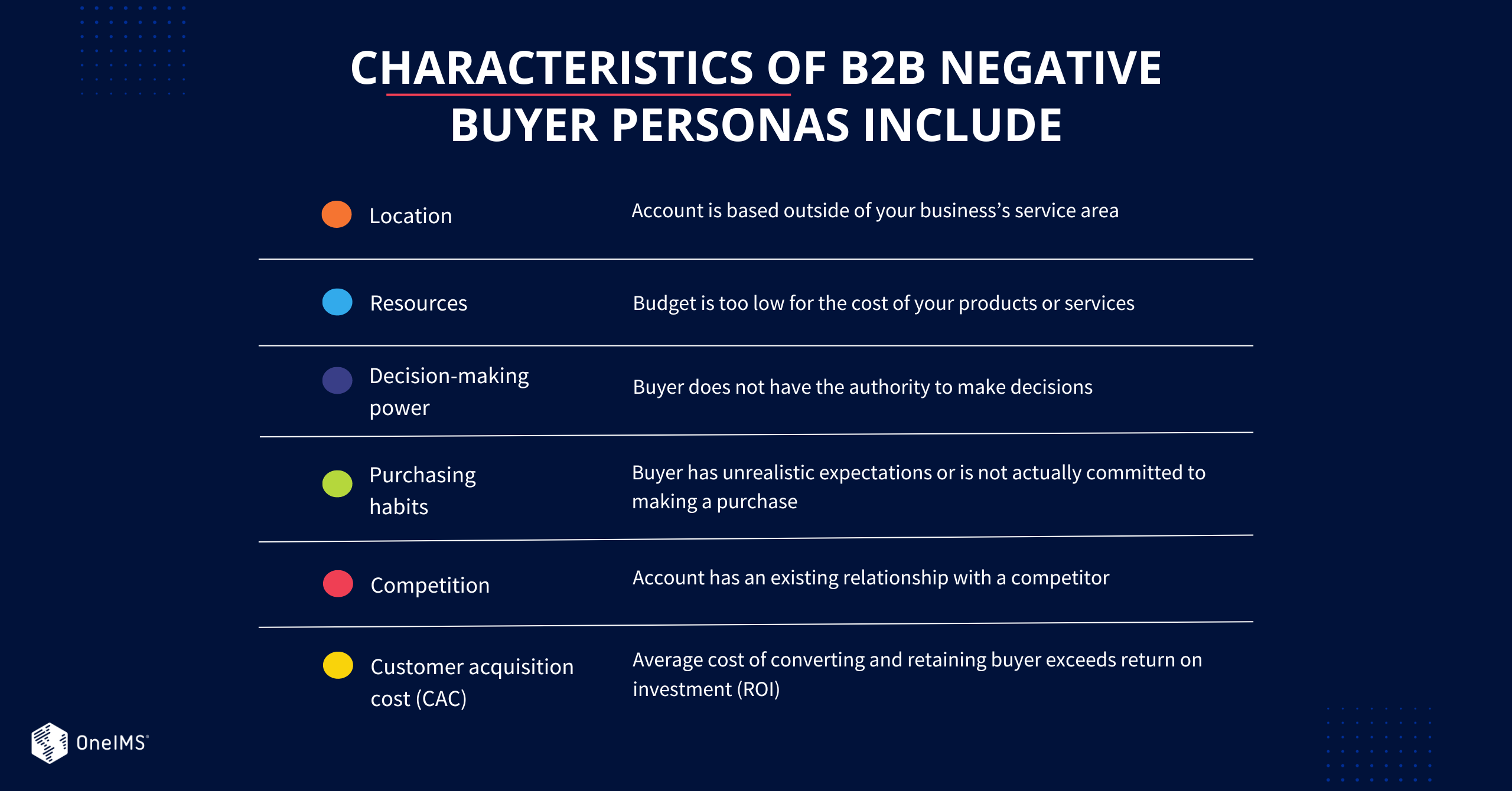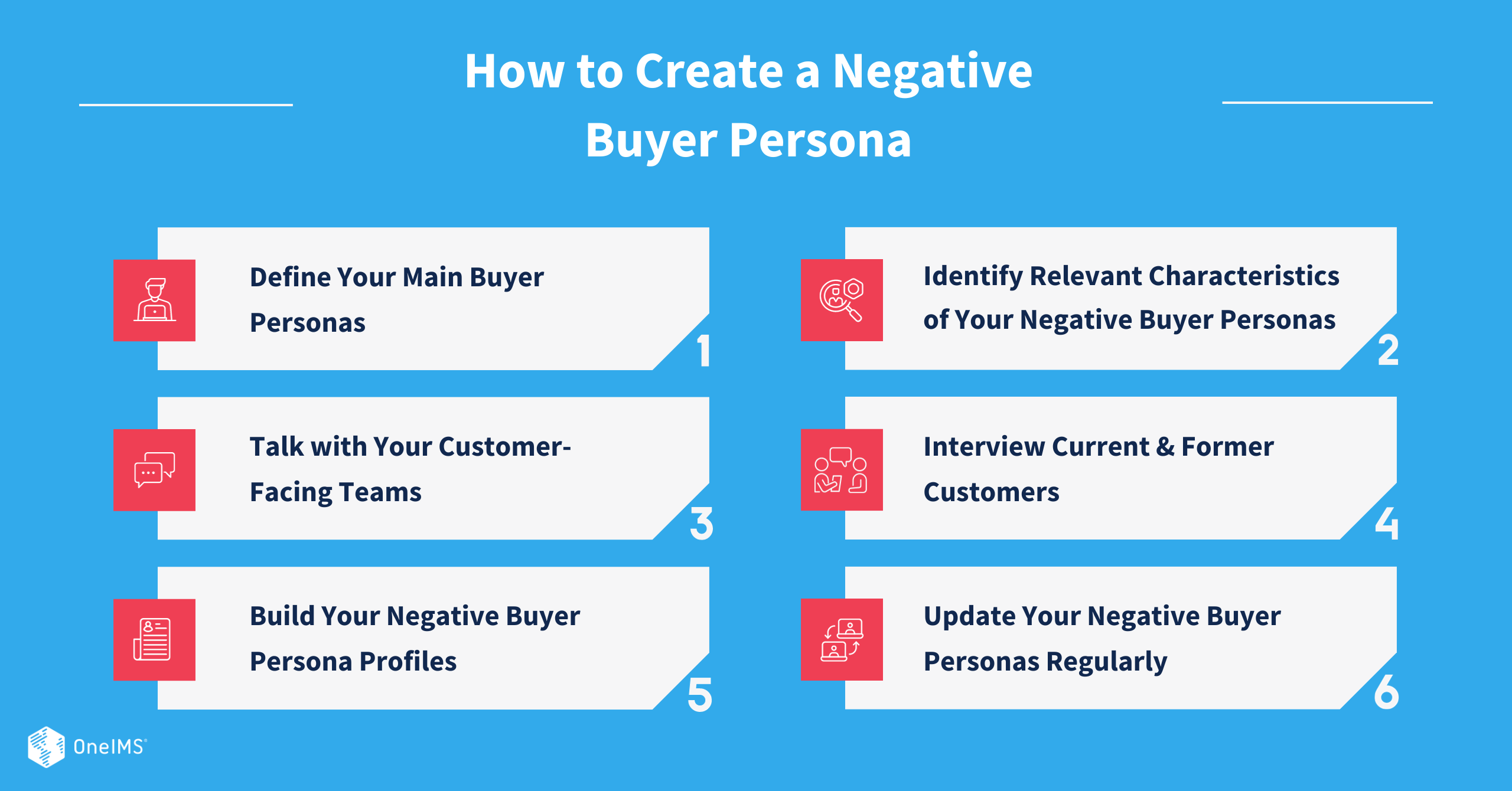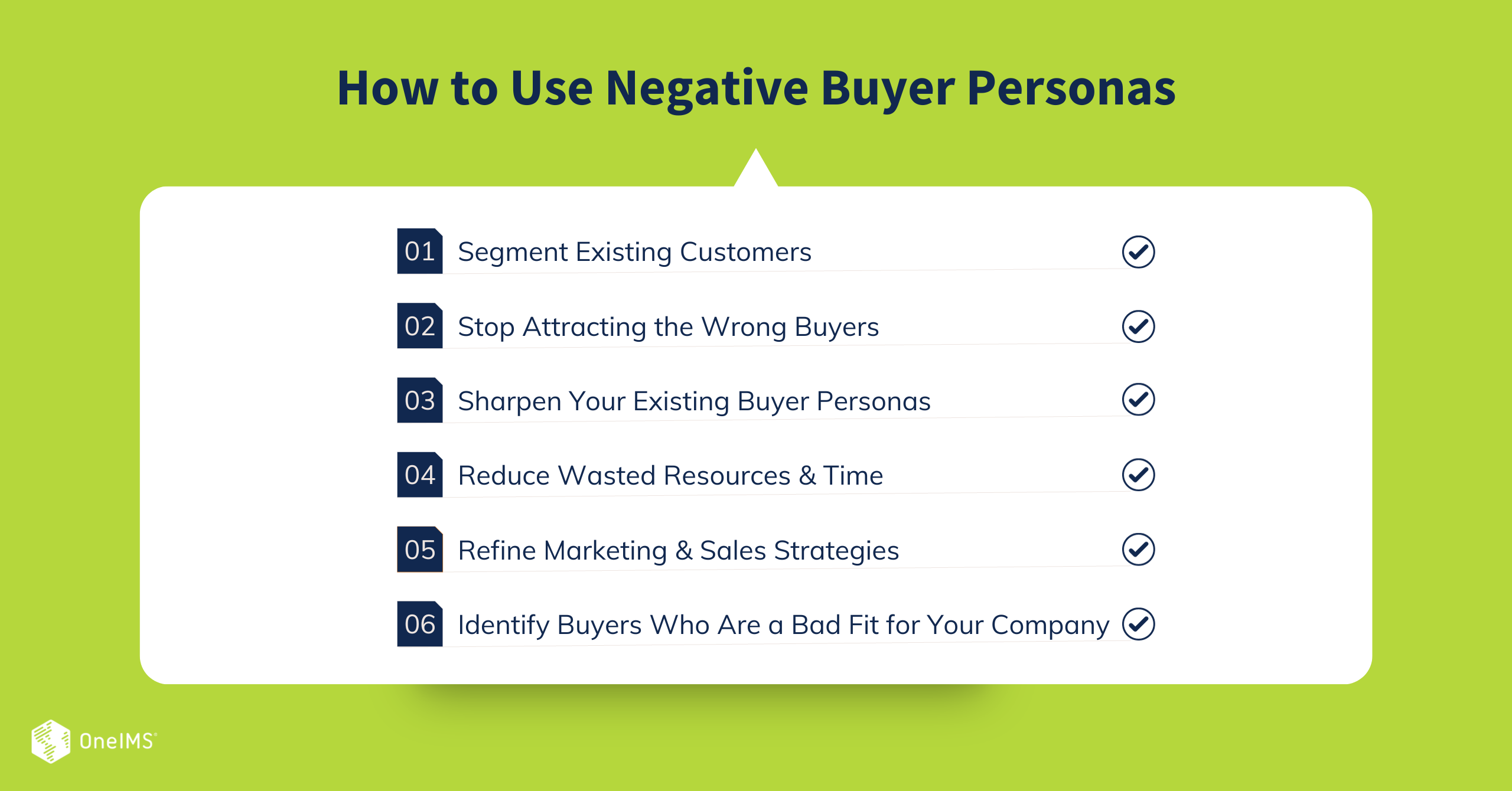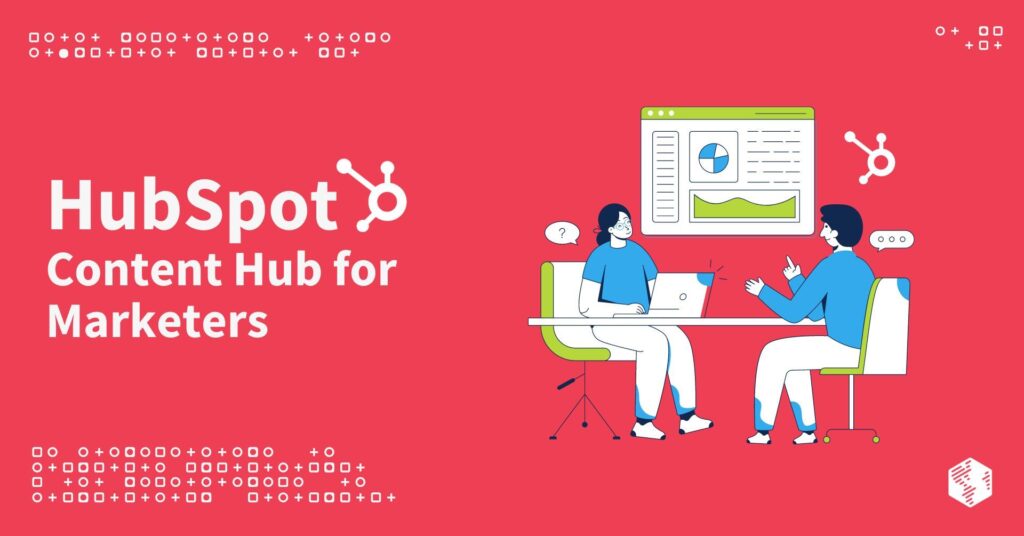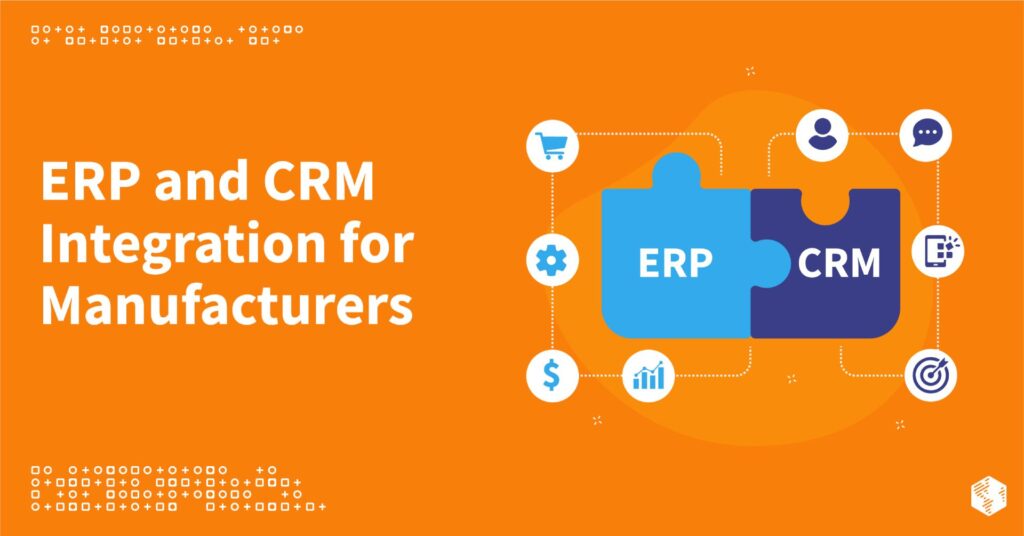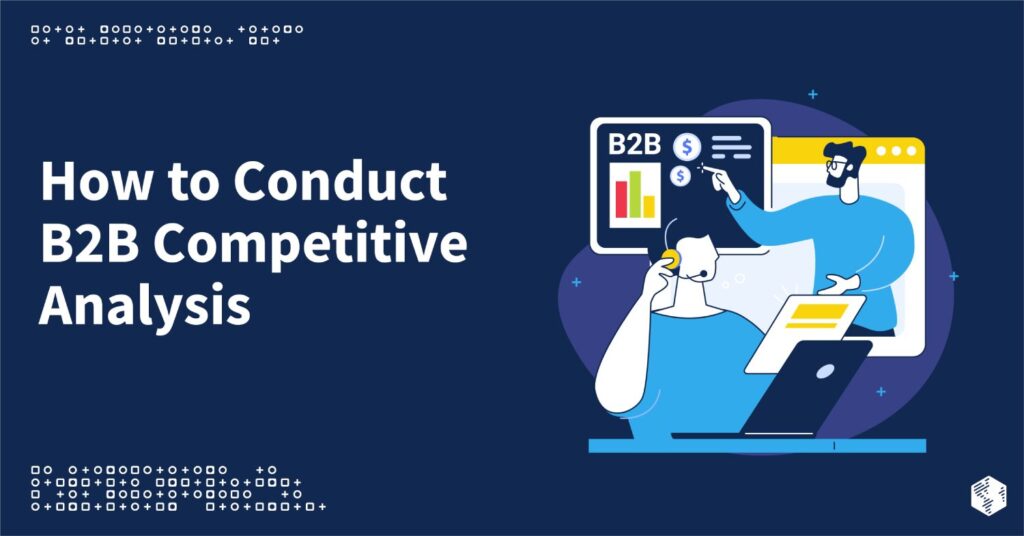Knowing your target audience is key to business-to-business (B2B) success. Once you know who you’re targeting, you can craft messages and content that educate, inform, entertain, and speak directly to your ideal buyers.
Just as important? Knowing who not to target.
Understanding “bad fit” buyers is a significant advantage for B2B companies. With this knowledge in hand, you can avoid wasting time and resources on people who are unlikely to make a purchase. Instead, you can focus on buyers who are most likely to develop long-term relationships with your company.
Negative buyer personas, and their positive counterparts, are the doorways to this essential knowledge. Let’s take a closer look at how negative buyer personas can benefit and transform your B2B marketing and sales strategies.
Negative Buyer Personas, Explained
Before we dive into negative buyer personas, it’s important to understand buyer personas themselves.
A buyer persona is a fictional profile that represents your ideal customer. These profiles are based on market research as well as data from your existing customer base. Using buyer personas, you can more easily identify and market to your target audience.
Negative buyer personas do the opposite. Also called exclusionary personas, they describe the type of buyers you want to avoid—anyone who is not a good fit for your products, services, company, or brand. These profiles show your marketing team who to avoid marketing to and guide your sales team away from “bad apples.”
If you already take advantage of buyer personas, consider adding negative buyer personas to your B2B toolkit.
Common Characteristics of Negative Buyer Personas
The characteristics, behaviors, and factors described in your negative buyer persona will be custom to your B2B organization. There’s no one-size-fits-all list of elements to include because the process of researching and developing a negative buyer persona requires thorough research, real-time data, and unique business insights.
However, there are some common characteristics that many B2B negative buyer personas include:
- Location: Account is based outside of your business’s service area
- Resources: Budget is too low for the cost of your products or services
- Decision-making power: Buyer does not have the authority to make decisions
- Purchasing habits: Buyer has unrealistic expectations or is not actually committed to making a purchase
- Competition: Account has an existing relationship with a competitor
- Customer acquisition cost (CAC): Average cost of converting and retaining buyer exceeds return on investment (ROI)
Once you’ve defined the characteristics relevant to your business, you can begin the process of creating a detailed negative buyer persona. Remember that the more specific you are, the more realistic and helpful your negative buyer persona will be.
How to Create a Negative Buyer Persona
The process of creating a negative buyer persona is similar to that of other buyer personas, with a few key differences. Follow these steps to develop your negative buyer persona profiles—and be sure to invest the time and effort into making them as accurate as possible so you can get the most benefit from these tools.
Define Your Main Buyer Personas
The first step is to create your ideal buyer personas. Why? Because you can’t accurately portray who you don’t want to target without at least some idea of who you do want to target.
However, keep in mind that the research you conduct to create your negative buyer personas may also reveal insights relevant to your buyer personas. Nothing is set in stone, and all buyer personas—both inclusionary and exclusionary—should be updated periodically based on new data and information.
Identify Relevant Characteristics of Your Negative Buyer Personas
Consider the characteristics relevant to your unique target audience. What is the behavior of your ideal buyer? What pain points are they hoping to solve, and how do your products or services address their problems? Where do they live, what is their budget, and what industry are they based in?
The answers to these questions, which should be addressed in your main buyer personas, reveal the characteristics you are looking for. For your negative buyer personas, consider the opposite of these answers.
Talk with Your Customer-Facing Teams
Your marketing, sales, and customer success teams have first-hand experience with customers, and they can all bring something helpful to the table. Ask them to collaborate on creating a list of customer pain points, goals, and common behaviors. What customers generate the least revenue or have the highest customer acquisition cost (CAC)? What customers are difficult to work with or leave negative reviews? Which customers make a purchase and don’t come back? This data will help you identify “bad fit” buyers and create a more comprehensive negative buyer persona.
Interview Current & Former Customers
Both current and former customers are a gold mine of information. Current customers can reveal why they decided to do business with your company, and former customers can help you understand why they were not a good fit for your organization. Conduct interviews, create surveys, and look for common threads. The results are a helpful addition to your negative buyer persona profiles.
Build Your Negative Buyer Persona Profiles
With the results of your research at your fingertips, it’s time to start building your negative buyer personas. These profiles may contain several categories:
- Goals: What do these buyers want to achieve with your products or services?
- Challenges: What pain points do these buyers want to address?
- Behaviors: How do these buyers approach the purchasing process?
- Objections: What reasons do these buyers have to not do business with your company?
Additionally, include demographic information. However, keep in mind that this data may be the same as what is listed in your main buyer personas.
Update Your Negative Buyer Personas Regularly
Buyer personas, including negative buyer personas, are works in progress. The B2B landscape is constantly changing, as is the market, the economy, the expectations of buyers, and the purchasing habits of customers. These elements will impact your buyer personas, so make sure you continue to conduct research, analyze data, and update your persona profiles regularly.
Why Negative Buyer Personas Matter
Your marketing and sales strategies should be designed to attract and retain your target customers.
At the same time, it’s easy to get caught up in trying to build relationships with and convert every lead you come across—even if they aren’t the best fit. Instead of wasting time and resources on buyers who will never make a purchase, it’s more efficient to focus your efforts on people who are most likely to make a purchasing decision.
That’s the power of negative buyer personas. These profiles prevent you from wasting valuable resources on “bad fit” buyers, enhance your understanding of your ideal audience, and ensure your marketing and sales strategies cater to your target customers.
How to Use Negative Buyer Personas
Negative buyer personas offer several benefits to B2B organizations. After you create a negative buyer persona that aligns with the unique needs of your business, take full advantage of what they have to offer.
Segment Existing Customers
With negative buyer persona profiles in hand, you can segment out “bad fit” leads from the rest of your contacts—eliminating people who are not a good fit for your business. Then, you can avoid wasting resources on trying to convert them and achieve a lower cost-per-lead.
Stop Attracting the Wrong Buyers
Building a negative buyer persona is an excellent way to identify the “wrong buyers,” or those customers who have characteristics identifying them as unlikely to make a purchase. Use these profiles to stop attracting the wrong buyers.
Sharpen Your Existing Buyer Personas
Negative buyer personas help deepen your understanding of your existing buyer personas. Use the insights you discover while creating your negative buyer personas to sharpen your ideal customer profiles and improve your buyer personas.
Reduce Wasted Resources & Time
Spending time, effort, and other resources trying to convert leads who are not likely to become a customer is a waste. Negative buyer personas prevent waste by ensuring you don’t squander your marketing and sales efforts on the wrong people.
Refine Marketing & Sales Strategies
Use negative buyer personas to refine your B2B sales and marketing strategies.
Your marketing team can use these profiles to avoid marketing to the wrong people, figuring out where to advertise (by seeing where not to advertise), and developing the right content (by identifying the wrong content). Your sales team can use negative buyer persona profiles to spot and filter out “bad fit” customers early on in the process.
Identify Buyers Who Are a Bad Fit for Your Company
Not every person is a good fit for your business. They may be in the wrong industry, making your products or services irrelevant. Their budget might not align with the cost of doing business with your company. They could already have an existing relationship with one of your competitors. Regardless of the reason, being able to identify these potential “red flags” as early as possible will save you frustration in the long run.
Conclusion: The Power of the Negative Buyer Persona
Negative buyer personas are helpful tools for customer-facing teams in B2B companies. By taking the time to research and define negative buyer personas, you can ensure your marketing, sales, and customer support teams spend their time, resources, and effort on buyers who are most likely to do business with you.
To ensure everyone on your team has the information and support they need to reduce waste, refine strategies, and attract the right buyers, create negative buyer personas.
Need help developing effective personas, attracting new buyers, retaining existing customers, and growing your business? We’re ready to partner with you. Schedule a consultation with us today to get started.




